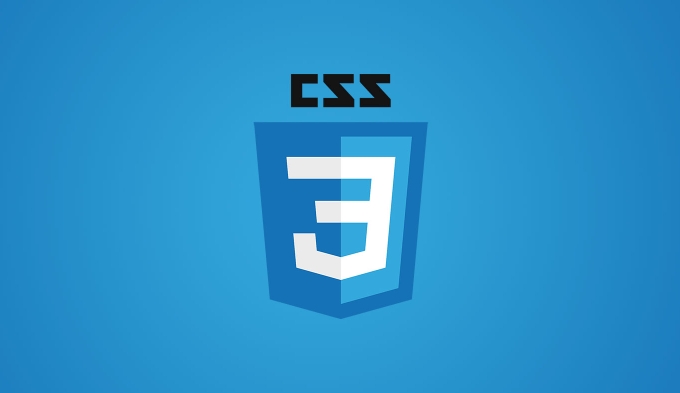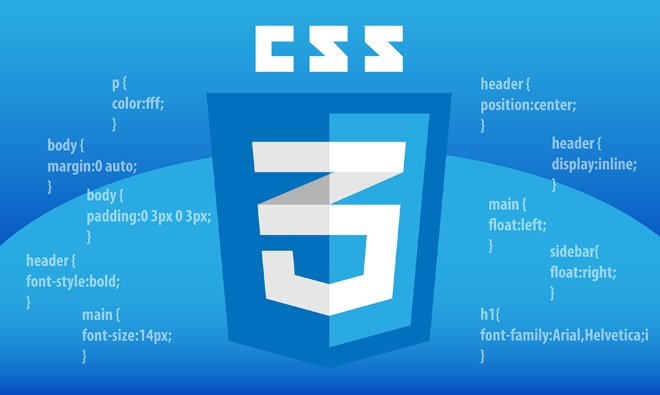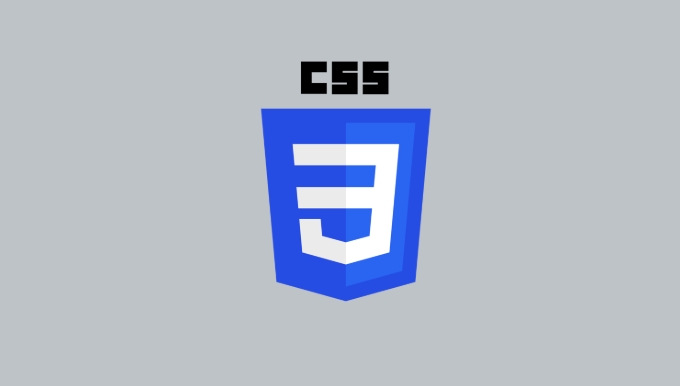 Web Front-end
Web Front-end
 CSS Tutorial
CSS Tutorial
 Implementing CSS Dark Mode using media queries and custom properties
Implementing CSS Dark Mode using media queries and custom properties
Implementing CSS Dark Mode using media queries and custom properties
Jul 11, 2025 am 02:31 AMTo implement dark mode, there are three methods: 1. Use prefers-color-scheme media to query and detect system preferences and automatically apply dark styles; 2. Use CSS custom attributes to uniformly manage color themes, improve maintenance efficiency and facilitate subsequent expansion; 3. Add buttons to manually switch themes through JavaScript, and save user selections in combination with localStorage. Combining these three methods can achieve a complete solution that prioritizes response to system settings and supports user-defined customization.

Implementing Dark Mode has now become a standard feature in modern web design. If you want your website to automatically switch topics based on user's system preferences, or let users manually select dark/light modes, using CSS media queries and custom properties is an easy and effective way to do this.

1. Use prefers-color-scheme media query to detect user preferences
CSS provides a very practical media feature: prefers-color-scheme , which can detect whether the user's operating system has dark or light colors set.

@media (prefers-color-scheme: dark) {
body {
background-color: #121212;
color: #eaeaea;
}
}After writing this way, if the user enables the system's dark mode, the page will apply the dark style you set. The benefit of this approach is that it does not require any JavaScript , pure CSS implementation, and is performance-friendly.
Note: This method can only respond to the user's system settings and cannot allow users to manually switch topics within the web page.
2. Use CSS custom properties (variables) to uniformly manage color themes
For more flexible control of styles in different modes, it is recommended to use CSS variables to centrally define color values.
:root {
--bg-color: #ffffff;
--text-color: #333333;
}
@media (prefers-color-scheme: dark) {
:root {
--bg-color: #121212;
--text-color: #eaeaea;
}
}
body {
background-color: var(--bg-color);
color: var(--text-color);
}The advantages of this method are:
- Unified style management, convenient maintenance
- When switching mode, you only need to modify and change the value, and you do not need to repeat the style.
- It is easier to manually switch themes in combination with JS.
3. Add button to manually switch themes (optional)
If you want users to choose their own theme on the page, you can dynamically modify CSS variables through JavaScript.
Add toggle button in HTML:
<button id="theme-toggle">Switch theme</button>
Example of JS control logic:
const toggleButton = document.getElementById('theme-toggle');
toggleButton.addEventListener('click', () => {
const currentTheme = document.documentElement.getAttribute('data-theme');
if (currentTheme === 'dark') {
document.documentElement.setAttribute('data-theme', 'light');
localStorage.setItem('theme', 'light');
} else {
document.documentElement.setAttribute('data-theme', 'dark');
localStorage.setItem('theme', 'dark');
}
});Then define the corresponding topic variable in CSS:
:root[data-theme="light"] {
--bg-color: #ffffff;
--text-color: #333333;
}
:root[data-theme="dark"] {
--bg-color: #121212;
--text-color: #eaeaea;
}This will enable the dual mechanism of "priority response system settings to support manual switching".
Tips: You can read the user's previous selection and save it to
localStorage, and directly apply their preferred theme the next time you visit.
Basically that's it. Through media query and judging system preferences, using CSS variables to uniformly manage colors, and adding JS manual switching capabilities, a complete and lightweight dark mode solution can be achieved. What is not complicated but easy to ignore is the details of variable naming and state persistence. If you are not careful, it may affect the experience.
The above is the detailed content of Implementing CSS Dark Mode using media queries and custom properties. For more information, please follow other related articles on the PHP Chinese website!

Hot AI Tools

Undress AI Tool
Undress images for free

Undresser.AI Undress
AI-powered app for creating realistic nude photos

AI Clothes Remover
Online AI tool for removing clothes from photos.

Clothoff.io
AI clothes remover

Video Face Swap
Swap faces in any video effortlessly with our completely free AI face swap tool!

Hot Article

Hot Tools

Notepad++7.3.1
Easy-to-use and free code editor

SublimeText3 Chinese version
Chinese version, very easy to use

Zend Studio 13.0.1
Powerful PHP integrated development environment

Dreamweaver CS6
Visual web development tools

SublimeText3 Mac version
God-level code editing software (SublimeText3)

Hot Topics
 What is 'render-blocking CSS'?
Jun 24, 2025 am 12:42 AM
What is 'render-blocking CSS'?
Jun 24, 2025 am 12:42 AM
CSS blocks page rendering because browsers view inline and external CSS as key resources by default, especially with imported stylesheets, header large amounts of inline CSS, and unoptimized media query styles. 1. Extract critical CSS and embed it into HTML; 2. Delay loading non-critical CSS through JavaScript; 3. Use media attributes to optimize loading such as print styles; 4. Compress and merge CSS to reduce requests. It is recommended to use tools to extract key CSS, combine rel="preload" asynchronous loading, and use media delayed loading reasonably to avoid excessive splitting and complex script control.
 External vs. Internal CSS: What's the Best Approach?
Jun 20, 2025 am 12:45 AM
External vs. Internal CSS: What's the Best Approach?
Jun 20, 2025 am 12:45 AM
ThebestapproachforCSSdependsontheproject'sspecificneeds.Forlargerprojects,externalCSSisbetterduetomaintainabilityandreusability;forsmallerprojectsorsingle-pageapplications,internalCSSmightbemoresuitable.It'scrucialtobalanceprojectsize,performanceneed
 Does my CSS must be on lower case?
Jun 19, 2025 am 12:29 AM
Does my CSS must be on lower case?
Jun 19, 2025 am 12:29 AM
No,CSSdoesnothavetobeinlowercase.However,usinglowercaseisrecommendedfor:1)Consistencyandreadability,2)Avoidingerrorsinrelatedtechnologies,3)Potentialperformancebenefits,and4)Improvedcollaborationwithinteams.
 CSS Case Sensitivity: Understanding What Matters
Jun 20, 2025 am 12:09 AM
CSS Case Sensitivity: Understanding What Matters
Jun 20, 2025 am 12:09 AM
CSSismostlycase-insensitive,butURLsandfontfamilynamesarecase-sensitive.1)Propertiesandvalueslikecolor:red;arenotcase-sensitive.2)URLsmustmatchtheserver'scase,e.g.,/images/Logo.png.3)Fontfamilynameslike'OpenSans'mustbeexact.
 What is Autoprefixer and how does it work?
Jul 02, 2025 am 01:15 AM
What is Autoprefixer and how does it work?
Jul 02, 2025 am 01:15 AM
Autoprefixer is a tool that automatically adds vendor prefixes to CSS attributes based on the target browser scope. 1. It solves the problem of manually maintaining prefixes with errors; 2. Work through the PostCSS plug-in form, parse CSS, analyze attributes that need to be prefixed, and generate code according to configuration; 3. The usage steps include installing plug-ins, setting browserslist, and enabling them in the build process; 4. Notes include not manually adding prefixes, keeping configuration updates, prefixes not all attributes, and it is recommended to use them with the preprocessor.
 What are CSS counters?
Jun 19, 2025 am 12:34 AM
What are CSS counters?
Jun 19, 2025 am 12:34 AM
CSScounterscanautomaticallynumbersectionsandlists.1)Usecounter-resettoinitialize,counter-incrementtoincrease,andcounter()orcounters()todisplayvalues.2)CombinewithJavaScriptfordynamiccontenttoensureaccurateupdates.
 CSS: When Does Case Matter (and When Doesn't)?
Jun 19, 2025 am 12:27 AM
CSS: When Does Case Matter (and When Doesn't)?
Jun 19, 2025 am 12:27 AM
In CSS, selector and attribute names are case-sensitive, while values, named colors, URLs, and custom attributes are case-sensitive. 1. The selector and attribute names are case-insensitive, such as background-color and background-Color are the same. 2. The hexadecimal color in the value is case-sensitive, but the named color is case-sensitive, such as red and Red is invalid. 3. URLs are case sensitive and may cause file loading problems. 4. Custom properties (variables) are case sensitive, and you need to pay attention to the consistency of case when using them.
 Case Sensitivity in CSS: Selectors, Properties, and Values Explained
Jun 19, 2025 am 12:38 AM
Case Sensitivity in CSS: Selectors, Properties, and Values Explained
Jun 19, 2025 am 12:38 AM
CSSselectorsandpropertynamesarecase-insensitive,whilevaluescanbecase-sensitivedependingoncontext.1)Selectorslike'div'and'DIV'areequivalent.2)Propertiessuchas'background-color'and'BACKGROUND-COLOR'aretreatedthesame.3)Valueslikecolornamesarecase-insens






